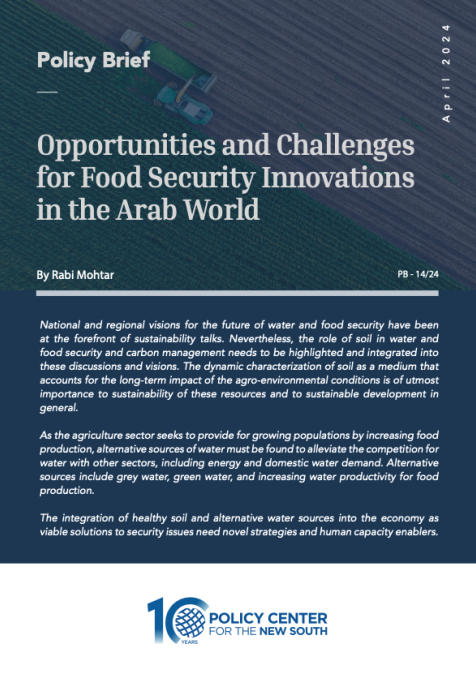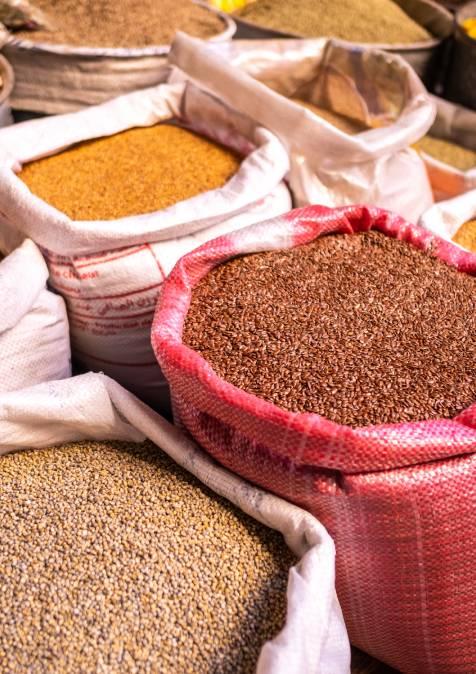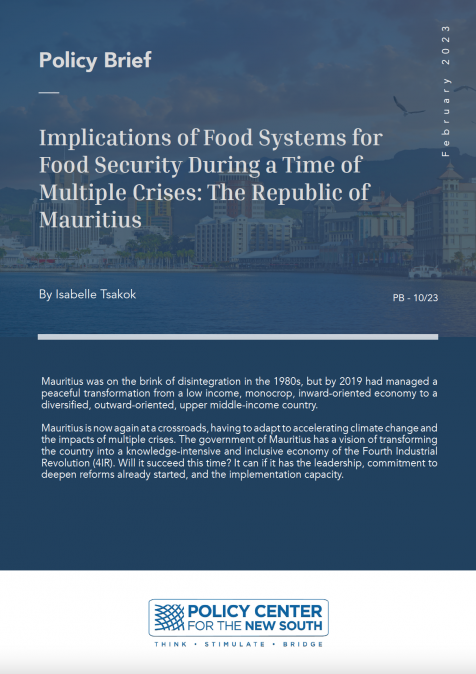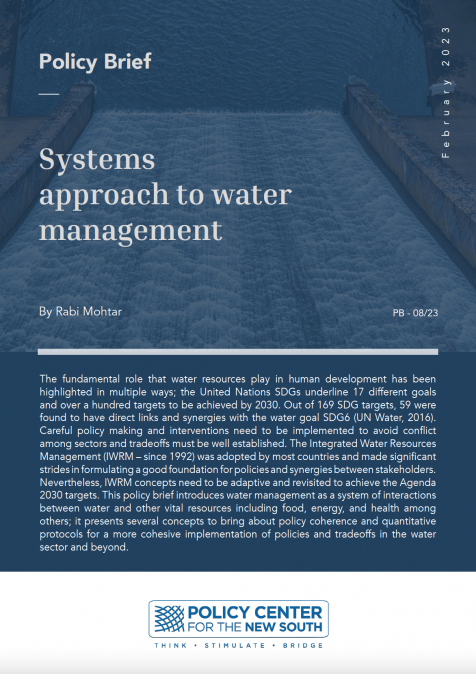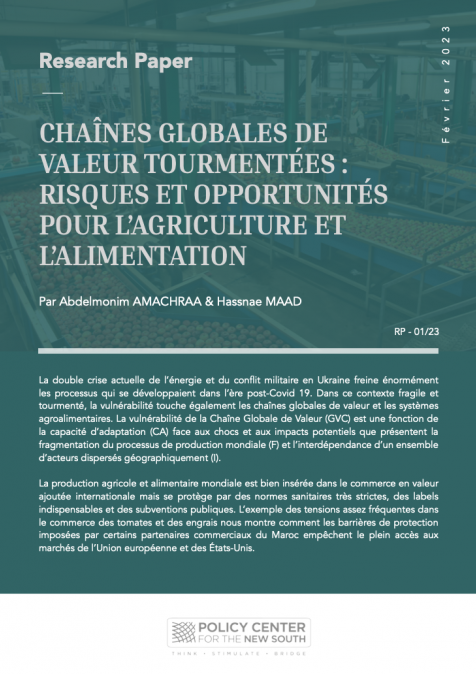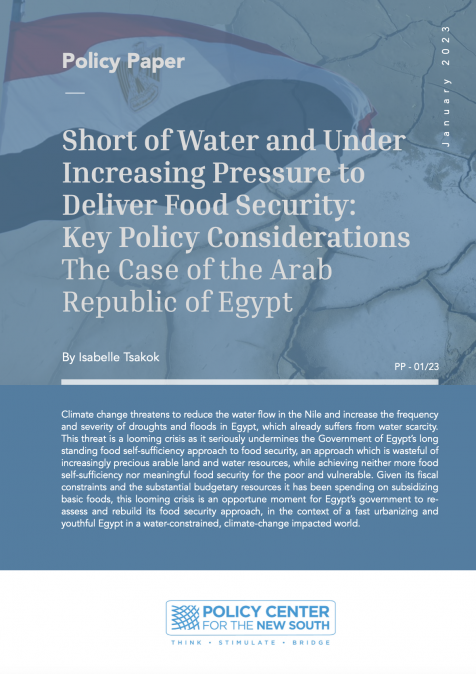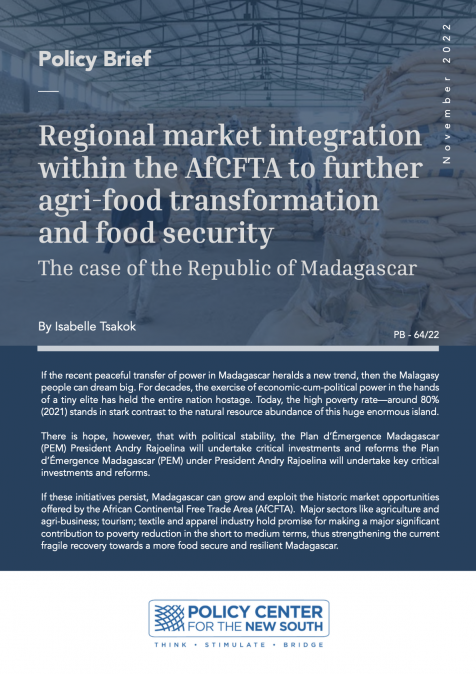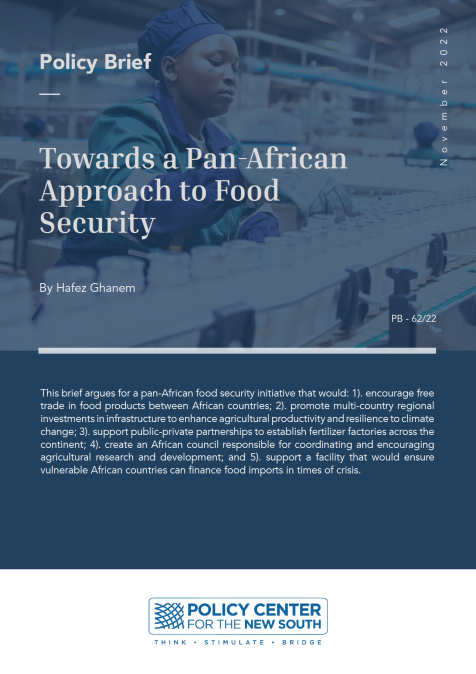Publications /
Policy Brief
National and regional visions for the future of water and food security have been at the forefront of sustainability talks. Nevertheless, the role of soil in water and food security and carbon management needs to be highlighted and integrated into these discussions and visions. The dynamic characterization of soil as a medium that accounts for the long-term impact of the agro-environmental conditions is of utmost importance to sustainability of these resources and to sustainable development in general.
As the agriculture sector seeks to provide for growing populations by increasing food production, alternative sources of water must be found to alleviate the competition for water with other sectors, including energy and domestic water demand. Alternative sources include grey water, green water, and increasing water productivity for food production.
The integration of healthy soil and alternative water sources into the economy as viable solutions to security issues need novel strategies and human capacity enablers.
This policy brief explores the human capital enablers of water and food security in the Arab world. The question we are addressing is the development of the human skills and resources that organizations and communities need to achieve water and food security. These enablers include the creation of a culture of innovation, as well as effective strategies for nurturing local capacities to develop such cultures to support the goals of food and water security. Although some parts of the Arab world have been catching up in generating new knowledge, the prototyping, application, and development of technology is still missing.
Historically, economists and policymakers have considered innovation as a linear process focused on technological advancement that will create economic growth. This linear techno- economic model has been evolving in the last few decades to include complex social and environmental challenges including population growth, food and water security, including system shocks such as antibiotic resistance and superbugs, and climate change (Haddad and Benner, 2021).
This policy brief concludes by highlighting the importance of localizing knowledge, water security, and food security, which are crucial to national and regional sovereignty.
INTRODUCTION
Circularity of the food and agriculture system is one of the major opportunities in the growing circular bioeconomy. The food and agriculture system in a business-as-usual scenario is not sustainable, with its high demands for water and energy. In addition, food production as it is now constituting a major source of water, soil, and air pollution; it also has a high carbon footprint.
A circular food and agriculture system could help combat climate change, while improving air and water quality, and enabling the production of healthy and safe food that does not pollute the ecosystem. For this, inputs into a circular agricultural system should include:
-
Renewable water: water that can be captured in the system and does not deplete freshwater resources.
-
Renewable energy: whether it’s wind, hydro, or solar power, it also recycles nutrients that are part of the system.
-
Renewable nutrients: in recycling nutrient-rich waste.
In the same way, the outcomes of a circular food system would be:
-
Nutrition and human-centric food production.
-
Reduced carbon emissions, chemical, and biological pollutants, and reduced food waste and
food loss.
-
Reduced water, land, and energy footprints.
A circular bioeconomy is essential to sustainable development, and it does require significant understanding of the role of soil in the food and agricultural system.
Globally, 72% of freshwater is used for irrigation and food production, with an increased food demand globally (WRI, 2020). With increased water demand from other sectors, less water will be available for irrigation. It is evident that the agriculture sector needs to look at other sources to meet its ever-growing water demand. In other words, the future of water for food requires alternative water-for-food sources.
Four different sources of alternative water will be discussed in detail in the next section.
Sources of Water for Food Production
To avoid competition for fresh water between various sectors of the economy, different water sources must be exploited for agriculture, including (Kirsht et al, 2024; WWC, 2023):
1. Green water
This describes the water that stays behind in the soil profile after rainfall or after an irrigation event. This constitutes a major resource of water for food in many parts of the world. Rainfed agriculture has been practiced for centuries, and with the increased pressure on farms to produce more food, agriculture will compete with other sectors for freshwater (Mohtar and Fares, 2023).
Knowledge about green water accounting and soil-water dynamics is critical when exploring the potential of green water for food production.
2. Grey water (treated water)
This is a resource that has not reached its potential for agriculture (Kesari, 2021). The challenge of using this resource is that many wastewater treatment plants are near big cities, far from regions of high agricultural production. Therefore, transporting treated water to agricultural areas requires energy and infrastructure.
Another challenge for the use of treated wastewater in agriculture is its impact on soil, human, and ecosystem health (Pinkerton et al, 2021). Exposure to contaminants (mostly heavy metals and pathogens) is a consideration when the use of treated wastewater for agriculture is maximised. In a study done on river water in Lebanon by Dagher et al, (2021) antibiotic resistant microorganisms were found at alarming levels, potentially posing a threat to public health. This highlights the importance of implementing innovative and holistic technologies to treat wastewater that will, first, dissipate health hazards, and, second, create an alternative source of water for irrigation that meets quality standards (Dagher et al, 2021).
These challenges, however, create opportunities for increasing wastewater reuse in agriculture and matching the water quality of treated wastewater with the required water needed for irrigation.
3. Precision irrigation
This includes applying high-efficiency water technology to soil to optimize the water use in terms of its production in the system. Precision irrigation, with high data and artificial intelligence (AI) use, can allow use of precision irrigation systems and technologies to maximize water productivity. This too requires knowledge of soil-water dynamics.
4. Water productivity
This is a critical element in this strategy that not only involves the optimal management of water use production and economics, it also involves critical elements such as selecting the appropriate crop for that area. Water productivity refers to the amount of biomass produced per unit of water used by a plant. So, this concept is not only about land productivity, but optimizing the amount of water used for locally adapted food production.
It is important to highlight that, in this framework, nutrition plays a huge role, and the outcome of a sustainable production system is not only the quantity of food generated, but the quality of the food, in terms of the ability to produce high-nutrient food for human consumption. In the same manner, this framework accounts for the water and air pollution of the production system.
Soil and Food Security
Water and food security cannot be discussed without looking into the role of soil in water and food security, and in carbon management. Soil is at the core of sustainable development. It’s the medium in which food security is upheld. Soil plays an important role in water security, especially pertaining to water quality.
Population growth, agricultural intensification, urbanization, climate change, and economic practices are all factors at the core of this discussion.
Soil properties evolve with time, different management strategies, and environment; this highlights the need for a dynamic characterization of the soil, taking into account the long-term impact of agro-environmental conditions. This has not been the case with current approaches (Pinkerton et al, 2021).
In a dynamic characterization system, soil is not only a homogeneous mixture of solid, liquid, and air. Soil is a living entity that must relate to inherent soil characteristics and mapping, traditionally know as pedology. That is the intersection of the nature and morphology of soil material, and the evolution of those properties over time and over space, as a function of soil management.
This connectivity between the hydro functionality of the soil and its pedology is essential in dynamic characterization. In such characterization, the hydro-structural properties are integrated and that can be measured in the lab. Figure 1 describes the importance of soil health to water and food security, and to climate mitigation, through carbon management.
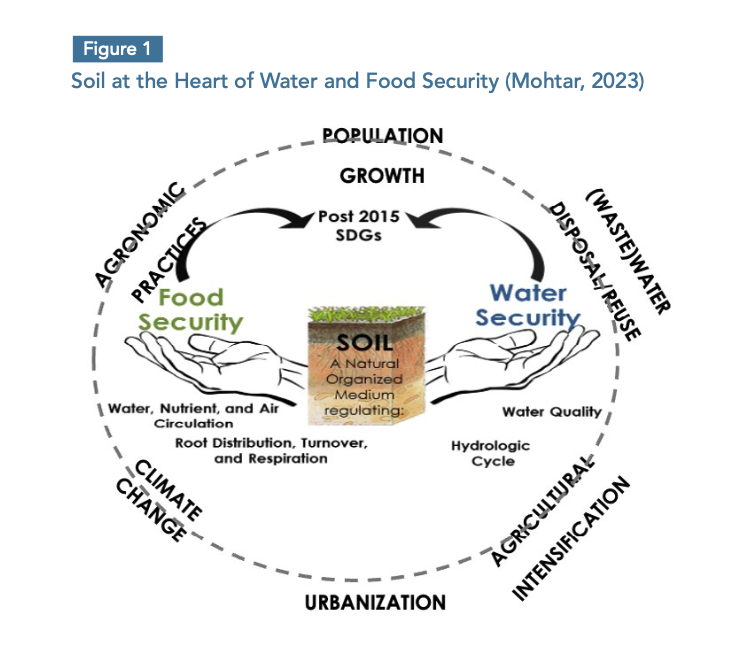
The simultaneous measurements of soil shrinking behavior, soil water retention, and soil hydraulic conductivity allow us to fully characterize the soil. Quantifying the water retention properties of soil using this dynamic approach becomes an exercise that is done to precision and becomes useful as economic and irrigation parameters (Mohtar and Fares, 2011).
However, the application of soil science as part of a plan for the future of water for food, and the future of food security in the Arab world, needs an enabler. Such an enabler requires elements as outlined below.
Food Security Enablers in the Arab World: A Culture of Innovation
Creating knowledge is a dynamic rather than a linear process. Whatever knowledge is generated today can become obsolete quickly; this applies to almost every field. Knowledge must not be generated only for the sake of being created—it must flow into actions in good time if it is to retain its worth and usefulness (Spinello, 1998). This knowledge-generation chain should encompass the following:
-
Basic and applied research;
-
Demonstration research;
-
Prototyping and conceptualization;
-
Application and development.
Such a chain is missing in the Arab world. The production of knowledge in basic and applied research and the demonstration research has not led into the prototyping, application and development in
most of the Arab World. Scientific research in this region has come short of being a platform to socio-economic development and Arab countries need to implement strategies to close this gap (ElObeidy, 2013).
The engine of knowledge generation has several components, with the following three major elements:
1. National research priorities; 2. Innovation;
3. Technology development.
The vision, financial resources, and leadership input into these three pillars should yield a knowledge-based economy, enabling local capacity building for science and development, and global permanence.
This engine is malfunctioning in the Arab world because of the tightly incurred, interconnected elements of this engine. If any one of them is missing, then the whole supply chain fails and does not generate the necessary outcome.
National Research Priorities
It is important to highlight a system of interactions that allows us to look at primary resources, including water, energy, food, and health, and to try to map a regional integration platform across these primary resources (WWC, 2023).
Within the Arab world, some regions are energy rich, but lack water and food resources. Others have potential for food production and have potential for sufficient water resources, but they lack energy resources.
National resource mobilization schemes require special data analysis and analytics that allow for the mapping of these resources in a way that integrates water-energy-food and health security for the region. Such integration platforms allow countries to better govern their resources.
This call for achieving regional integration from an economic standpoint must be independent from the political challenges that we face day to day, and requires a culture of innovation.
Culture of Innovation
Operationalizing the food security vision stated above requires innovations which builds upon a culture that supports creativity. Investment in research and development is a prerequisite for creating such a culture, but it’s not sufficient on its own. The elements essential for the creation of a culture of innovation include the following:
1. Financial resources: investment in resources for research and development (R&D) infrastructure. This requires four elements:
-
Political will;
-
Capacity investment;
-
Research infrastructure; and
-
A strategy for increasing R&D capacity: this includes the mapping of national capacity to identify the key elements of success, such as institutional capacity for national entities and gaps in meeting the national goals to ensure proper allocation and utilization of resources, and to reduce risk of redundancy in infrastructure and programs; as well as curiosity-driven research.
2. Freedom to publish.
3. Freedom of access to knowledge and data. 4. Academic freedom.
5. Creation of a critical mass of scientists in a specific area: Numbers matter; it is important to have innovators and scientists from different fields of sciences and alternative perspectives to enable the needed ‘cross pollination’ of ideas.
6. Developing local capacity: Capacity building must be inclusive of all talents of a society to enable the creation of a knowledge-based economy. The capacity training must include the physical, life, and social sciences, the management and commutation of the science, and the technical and administrative staff to run the science administration. Vocational training must be part of capacity building and should include other talents that may not be qualified or interested in science and science management. Balance local and imported talents (expatriate).
7. Collaboration with industry.
8. Manufacturing to support the development of technology.
Innovation thrives in an atmosphere of freedom to express ideas and thoughts, without the innovator being penalized. Also, scientists need to be recognized by the state and their work to be valued and their contribution heard. Experience shows that scientists and innovators are uniquely different when it comes to social behavior and conduct (Laghadir, 2023).
FINAL REMARKS
In order to achieve sovereignty in the Arab world, water and food security must be localized. Equally important is to localize knowledge and technology development to achieve this security.
Developing a culture of science requires scientists to receive recognition from the state that their work is valued, and their contributions heard. Experience shows that scientists and innovators are uniquely different when it comes to social behavior and conduct; non-conformist scientists and innovators enable and drive change and transformation (Tout, 2020 and Laghadir, 2023). It is important to take into consideration professional and technical support and employment stability to ensure the permanence and impact of local knowledge.
Innovation thrives in an atmosphere of freedom to express ideas and thoughts without having the innovator penalized for that expression. It is important to have innovators and scientists from different fields of science and alternative perspectives, to enable the necessary cross-fertilization of ideas.
Finally, and in the context of resource security, regional integration is crucial to national and regional sovereignty.
REFERENCES
Dagher, Lea, Jouman Hassan, Samer Kharroubi, Hadi Jaafar, and Issmat I. Kassem (2021). Nationwide Assessment of Water Quality in Rivers across Lebanon by Quantifying Fecal Indicators Densities and Profiling Antibiotic Resistance of Escherichia coli. Antibiotics (Basel). 2021 Jul; 10(7): 883.
El Obeidy, H (2013). Scientific system in the Arab region: From prestige towards development. Regional Science Policy & Practice. Volume 5, Issue 1, March 2013, Pages 97-113. https://doi.org/10.1111/j.1757-7802.2012.01089.x
Haddad, C and Benner, M. Situating innovation policy in Mediterranean Arab countries: A research agenda for context sensitivity. Research Policy. Volume 50, Issue 7, September 2021, 104273. https://doi.org/10.1016/j. respol.2021.104273
Kesari, K.K., Soni, R., Jamal, Q.M.S. et al. Wastewater Treatment and Reuse: a Review of its Applications and Health Implications. Water Air Soil Pollut 232, 208 (2021). https://doi.org/10.1007/s11270-021-05154-8
Krisht, G.; BouSaid, R.; Aboujaoude, L.; Hajjar, T.; Kamaleddine, F.; Soufi, AR.; Bashour, I.; Yanni, SF.; Mohtar, R.; Dare, A. Irrigating With Treated Wastewater. 2024 Elsevier Inc.
Laghadir, M (2023). How Non-Conformists Move The World And Drive Business Success. Leadership Matters: A weekly LinkedIn Newsletter. Published online May 1, 2023 at https://www.linkedin.com/pulse/how-non- conformists-move-world-drive-business-success-mukesh-lagadhir/
Mohtar RH and Fares A (2022) The Future of Water for Food. Front. Sustain. Food Syst. 6:880767. doi: 10.3389/ fsufs.2022.880767
Mohtar, RH (2023). Opportunities and Challenges for Innovations in Food Security in the Arab World. Food Security in the Arab World During and After Crisis. Presentation at ALECSO, Tunisia, 20-21 December, 2023
Pinkerton TC, AT Assi, VA Pappa, E Kan, RH Mohtar. (2021) Impact of Dairy Wastewater Irrigation and Manure Application on Soil Structural and Water-Holding Properties. Transactions of the ASABE. Vol. 64(3): 857-868 © 2021 American Society of Agricultural and Biological Engineers ISSN 2151-0032 https://doi.org/10.13031/ trans.14351
Spinello, R., 1998. The knowledge chain. Business Horizons. Volume 41, Issue 6, November–December 1998, Pages 4-14. https://doi.org/10.1016/S0007-6813(98)90017-9
Tout, S (2020). How Nonconformist Innovation Enables Ethical Business Transformation. Forbes Technology Council. Published online on July 21, 2020 at https://www.forbes.com/sites/forbestechcouncil/2020/07/31/how- nonconformist-innovation-enables-ethical-business-transformation/?sh=52a8d071ffba
COUNCIL POST
World Resources Institute (WRI), (2020) Securing Freshwater for all. Available online: https://www.wri.org/
freshwater Accessed February 2024
WWC, 2023. World Water Council Task Force on IWRM (Rabi Mohtar, Chair). Opening Up Integrated Water Resource Management to Include Energy, Food, Health, and Education.

